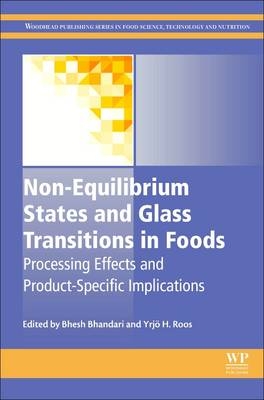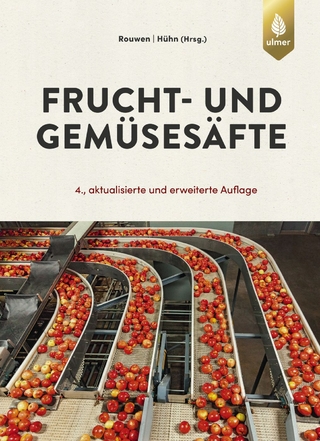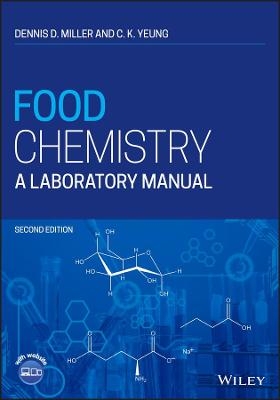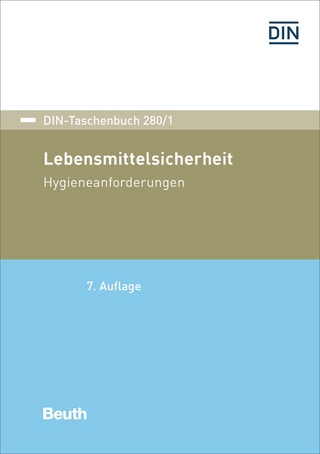
Non-Equilibrium States and Glass Transitions in Foods
Woodhead Publishing Ltd (Verlag)
978-0-08-100309-1 (ISBN)
After brief introductory chapters introduce the science behind non-equilibrium states and glass transitions in foods, the book details how glass transition temperature is affected by composition and the ways it influences processability and physico-chemical changes during the storage of foods, also exploring how these effects can be controlled.
The second section looks at individual foods, highlighting the implications of non-equilibrium states and glass transitions within these foods. Maintaining and improving the quality of food is of upmost importance to food companies who have to ensure that the shelf life of their products is as long as possible.
A large amount of research has been performed into glass transitions in food over the last few years, however there has not been a comprehensive review. This book fills that gap.
Professor Bhesh Bhandari has been associated with the University of Queensland for the last 30 years. His research and teaching areas include food materials science, processing, physical and engineering properties of foods. Prof Bhandari has published three co-edited books and more than 500 book chapters and research papers. His publications have been cited more than 36000 times (Google scholar) and is recognised as one of the leading researchers globally in glass transition and encapsulation technologies in food science discipline. He has patented two significant technologies, a continuous microgel particle formation device for encapsulation of food and pharmaceuticals and a technology to produce ethylene powder by applying materials science approach. He has currently several projects on 3D food printing. Prof. Roos is associated with the University College Cork, Ireland. His teaching and research activities involve food materials science including glass transition. More specifically, his main research interests include crystallization, freezing, dehydration, encapsulation, reaction kinetics, state transitions and water relations of food and biological materials. He is a known authority in developing and applying glass transition concept in various food systems. He has authored one book Phase transitions in foods and two co-edited books. He has published more than 200 papers including book chapters which are cited close to 8000 times (2014). Prof Roos has appeared on ISIHighlyCited.com as a highly cited scientist in the field of Agricultural Sciences. He is President (2013-) and an elected member of the Central Committee of International Symposium of Water in Foods (ISOPOW) and member of several international scientific organizations.
1. Introduction to non-equilibrium states and glass transitions 2. Glass transition of major food components and their mixtures 3. Methods of measurement of non-equilibrium states and glass transition Part One: Non-equilibrium states and glass transition – processing relationships 4. Food freezing and non-equilibrium states/glass transition 5. Baking and non-equilibrium states/glass transition 6. Air-drying and non-equilibrium states/glass transition 7. Freeze-drying and non-equilibrium states/glass transition 8. Spray-drying and non-equilibrium states/glass transition 9. Extrusion technology and non-equilibrium states/glass transitions 10. Non-equilibrium states/glass transition and crystallization 11. Non-equilibrium states/glass transition and food packaging materials Part Two: Product specific implications of non-equilibrium states and glass transitions – understanding and controlling the transitions 12. Implications of non-equilibrium states and glass transitions on cereals 13. Implications of non-equilibrium states and glass transitions in fried foods 14. Implications of non-equilibrium states and glass transitions in dried fruits and vegetables 15. Implications of non-equilibrium states and glass transitions in spray dried sugar-rich foods 16. Implications of non-equilibrium states and glass transitions in confectionery 17. Implications of non-equilibrium states and glass transitions in dairy powders 18. Implications of non-equilibrium states and glass transitions in frozen and dried fish and meat products 19. Implications of non-equilibrium states and glass transitions for encapsulated foods 20. Implications of non-equilibrium states and glass transitions for edible films and barriers 21. The effects of non-equilibrium states and storage conditions on glass transitions in food 22. Influence of non-equilibrium states and glass transition on the survival of bacteria
| Erscheinungsdatum | 02.12.2016 |
|---|---|
| Reihe/Serie | Woodhead Publishing Series in Food Science, Technology and Nutrition |
| Verlagsort | Cambridge |
| Sprache | englisch |
| Maße | 152 x 229 mm |
| Gewicht | 940 g |
| Themenwelt | Technik ► Lebensmitteltechnologie |
| ISBN-10 | 0-08-100309-9 / 0081003099 |
| ISBN-13 | 978-0-08-100309-1 / 9780081003091 |
| Zustand | Neuware |
| Haben Sie eine Frage zum Produkt? |
aus dem Bereich


